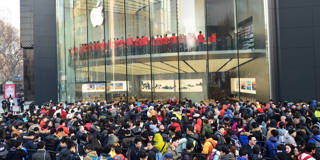Once living standards in China reach a certain level, citizens will almost certainly demand far more personal freedom and political accountability. The most fundamental challenge facing China’s leaders, then, is to find a governance model that fulfills these demands while continuing to exclude electoral democracy.
BEIJING – Last October, as he opened the 19th National Congress of the Communist Party of China, President Xi Jinping vowed that the country would have a “fully modern” economy by 2035, and would reach high-income status by 2049 – the 100th anniversary of the founding of the People’s Republic. One hopes that he is more successful than China’s first premier, Zhou Enlai, who in 1964 promised “four modernizations” by the end of the twentieth century.
Zhou’s plan focused on reforming four key sectors: agriculture, industry, defense, and science and technology. He did not set a specific income goal, but it is safe to say that he probably expected China to do better than it did: by World Bank standards, China at the turn of the century was a lower-middle-income country.
This time around, reaching China’s income goals might actually be the easy part. China’s real per capita GDP currently amounts to about 25% that of the United States. To join the high-income club, embodied by the OECD, China will have to raise that figure to at least 45% (depending on how real income is measured) – a level achieved, so far, by 36-40 economies.

BEIJING – Last October, as he opened the 19th National Congress of the Communist Party of China, President Xi Jinping vowed that the country would have a “fully modern” economy by 2035, and would reach high-income status by 2049 – the 100th anniversary of the founding of the People’s Republic. One hopes that he is more successful than China’s first premier, Zhou Enlai, who in 1964 promised “four modernizations” by the end of the twentieth century.
Zhou’s plan focused on reforming four key sectors: agriculture, industry, defense, and science and technology. He did not set a specific income goal, but it is safe to say that he probably expected China to do better than it did: by World Bank standards, China at the turn of the century was a lower-middle-income country.
This time around, reaching China’s income goals might actually be the easy part. China’s real per capita GDP currently amounts to about 25% that of the United States. To join the high-income club, embodied by the OECD, China will have to raise that figure to at least 45% (depending on how real income is measured) – a level achieved, so far, by 36-40 economies.